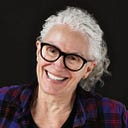Learning optimally — in 150 words or less (almost)
This week, a client asked me to provide a succinct explanation of “optimal learning.” Here goes!
Three kinds of knowing
- knowledge — facts, procedures, vocabulary
- understanding — how we conceptualize what we know
- skill — how effectively we apply what we know
Three kinds of learning emotions
- how we feel about learning (affects availability for learning)
- how we feel when we’re learning (affects engagement & memory)
- how we feel about what we’re learning (affects engagement & memory)
How memory works
Memory is stored in networks of connections between different parts of the brain. Stronger and more diverse connections improve memory (and skill).
Optimal learning
Optimal learning experiences involve the application of knowledge in real-world, emotion-laden contexts. Learning of this kind effectively integrates new information into existing neural networks—building understanding and skill, and providing a robust foundation for future learning and development.
VCoL (Virtuous Cycle of Learning)
VCoL is a four-step process that helps people learn optimally. It’s designed to leverage the brain’s natural motivational cycle, and works best when it becomes a habit of mind.
